
Be a Land Steward.
Sign up for Greenhouse Gases -
a weekly-ish newsletter that will teach you the science behind regenerative gardening, with action steps to help you make a difference in your backyard.

Sign up for Greenhouse Gases -
a weekly-ish newsletter that will teach you the science behind regenerative gardening, with action steps to help you make a difference in your backyard.

Regenerative agriculture is a sustainable practice that boosts nutrient cycling in soil.
The nutrient cycle helps farms to practice low-input agriculture. Instead, farmers capture and redirect nutrients on-site.
Regenerative methods include:
These practices create thriving ecosystems rich with available nutrients. You can apply these same techniques in your garden to have a more closed-loop system.
Let's explore how regenerative agriculture increases nutrient flow in gardens.
This cycle is crucial for the fertility and productivity of the soil. Nutrient Cycling is a Supportive Ecosystem Service.
The fact that “matter can neither be created nor destroyed” is helpful for gardeners to understand. This fact means we can use nutrients as they become available in our ecosystems.
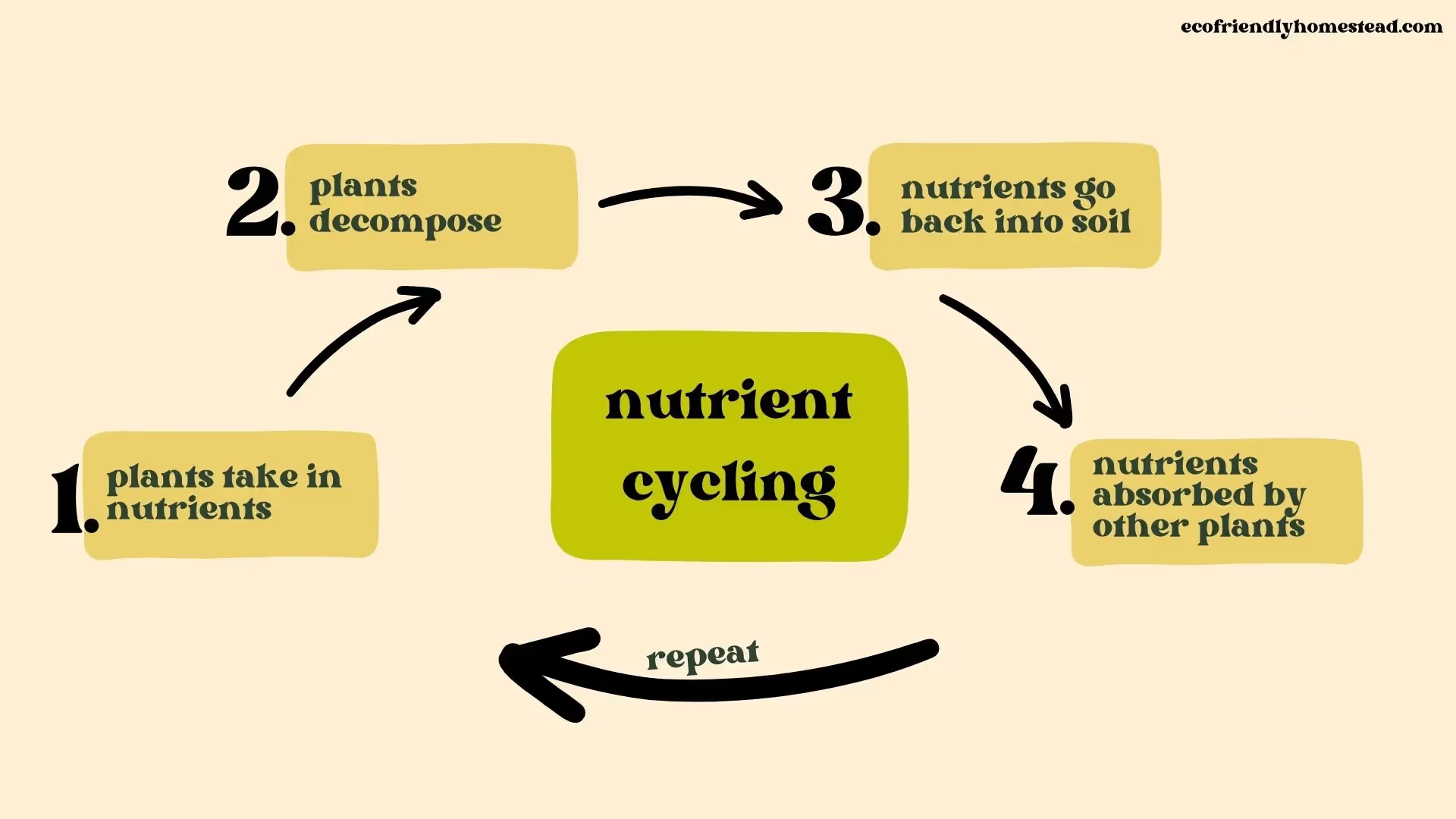
Any mineral in the soil or within plants goes through a nutrient cycle. But, these cycles are the ones most commonly harnessed in regenerative agriculture:
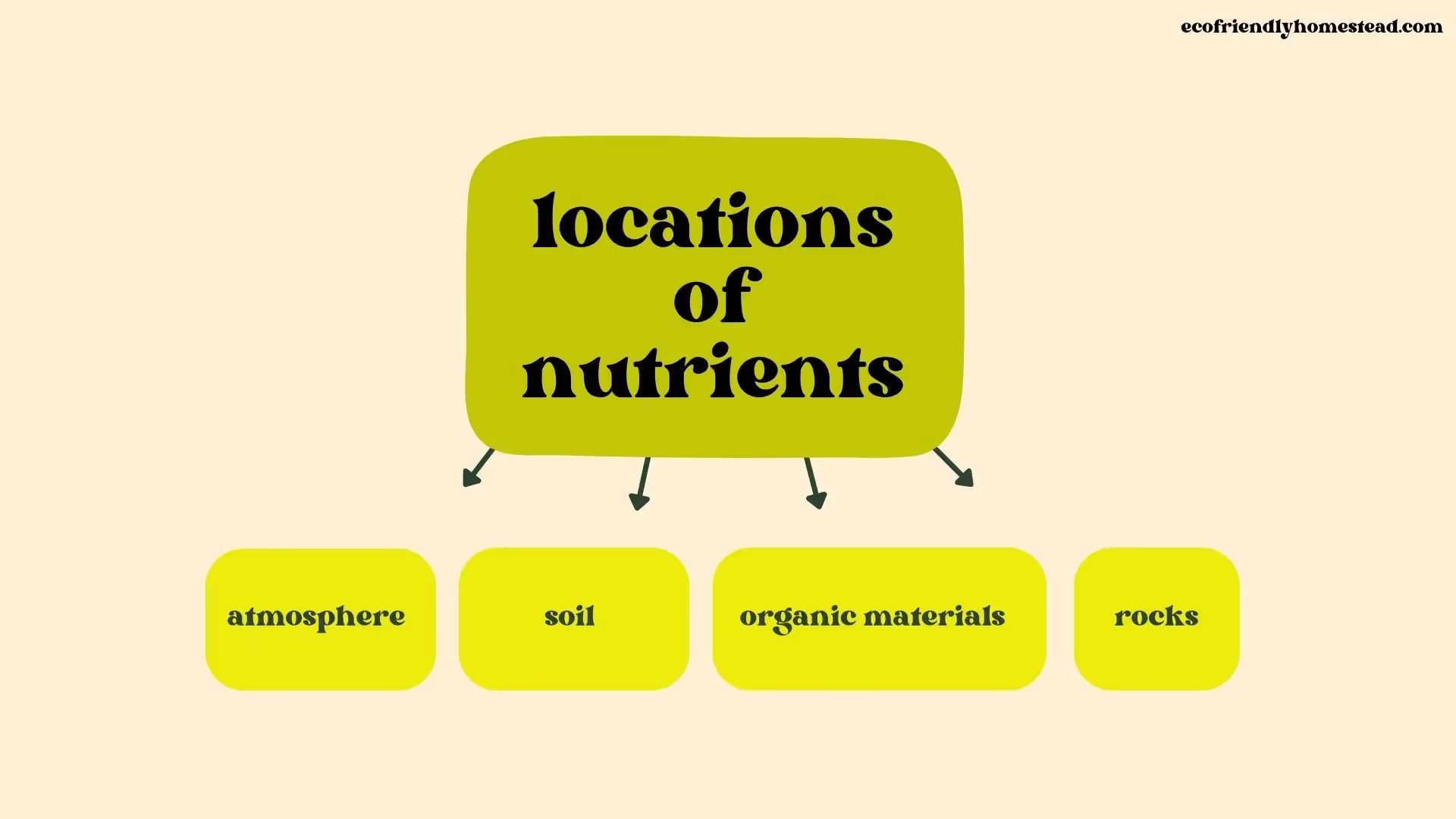
Nutrients are located in these 4 areas of the ecosystem:
Nutrients that “start” in any of these 4 locations can transfer from one location to another.
Plants take in minerals into their roots, leaves, and fruit. Plants have relations with microbes which help them get nutrients. When the plant dies or is cut, the breakdown of the organic material leaves behind nutrients.
Minerals can be “locked in place” in rocks. However, weathering can make those minerals available in the cycle. Plants with long taproots can draw up minerals that are deep in the soil (Bormann + Likens, 1967).
However, if the nutrients are removed, then they go somewhere else and can be “lost.”
For example, if you cut down a tree to sell for lumber, the carbon from the tree goes off your land and to a mill.
Alternatively, if that same tree fell in a wind storm it could decompose in place. Eventually, those nutrients would end up back in the soil and be made available to other plants (Sare 89).
Nutrient cycling is crucial in gardening and agriculture. A steady flow of nutrients is essential for plant growth and development.
Through the lens of sustainability, when we maintain nutrients on the land, we need fewer external inputs. This reduces the cost and environmental impact of our farms and gardens.
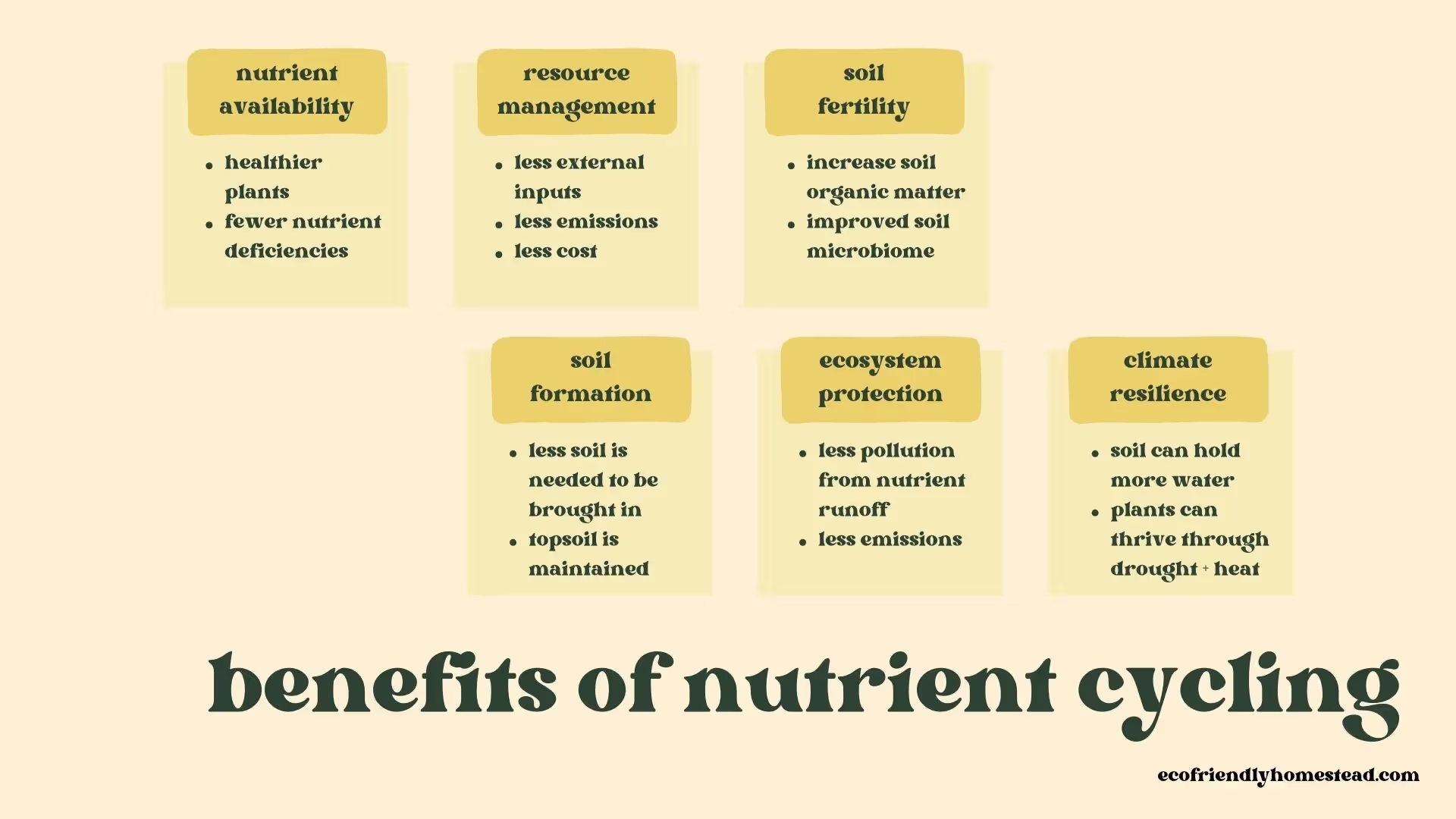
1. Nutrient Availability:
Nutrient cycling recycles organic matter, minerals, and nutrients.
In this cycle, these nutrients become accessible to plants. Plants are healthier with fewer nutrient deficiencies (SARE).
2. Sustainable Resource Management:
Farmers need less external inputs if nutrients are properly cycled. Instead, a sustainable farm works with on-site resources.
When regenerative farms use less fertilizers, the result is less greenhouse gas emissions and resource depletion (MIT).
Farms that harness nutrient cycling also promote long-term soil and ecosystem health.
3. Improved Soil Fertility:
Nutrient cycling enriches the soil with organic matter. According to the European Commission, organic matter improves soil structure, nutrient-holding capacity, and fertility. Healthy soils support robust plant growth and long-term productivity.
Nutrient circulation improves microbial activity, and so healthy soil microbiology develops. In turn, soil health and crop health improve. With a balanced soil food web, there's better nutrient availability for plants.
4. Soil formation:
Nutrient cycling plays a vital role in soil formation. As organic matter breaks down to enrich and add to the soil. Organic matter decomposes and makes nutrients available in this way.
Organic matter improves soil’s physical, chemical, and biological properties. Over time, nutrient cycling contributes to the development of fertile and productive soils (soilquality).
5. Environmental Protection:
Effective nutrient cycling minimizes nutrient losses and pollution. This decreases the negative impact on water bodies and ecosystems. Proper nutrient management promotes ecological sustainability and conserves natural resources.
6. Resilience to Climate Change:
According to the USDA, soil is more resilient to climate change when organic matter levels are high. Soil can hold more water so it is resistant to drought and floods. Proper nutrient recycling contributes to adaptation and mitigation efforts in agriculture.
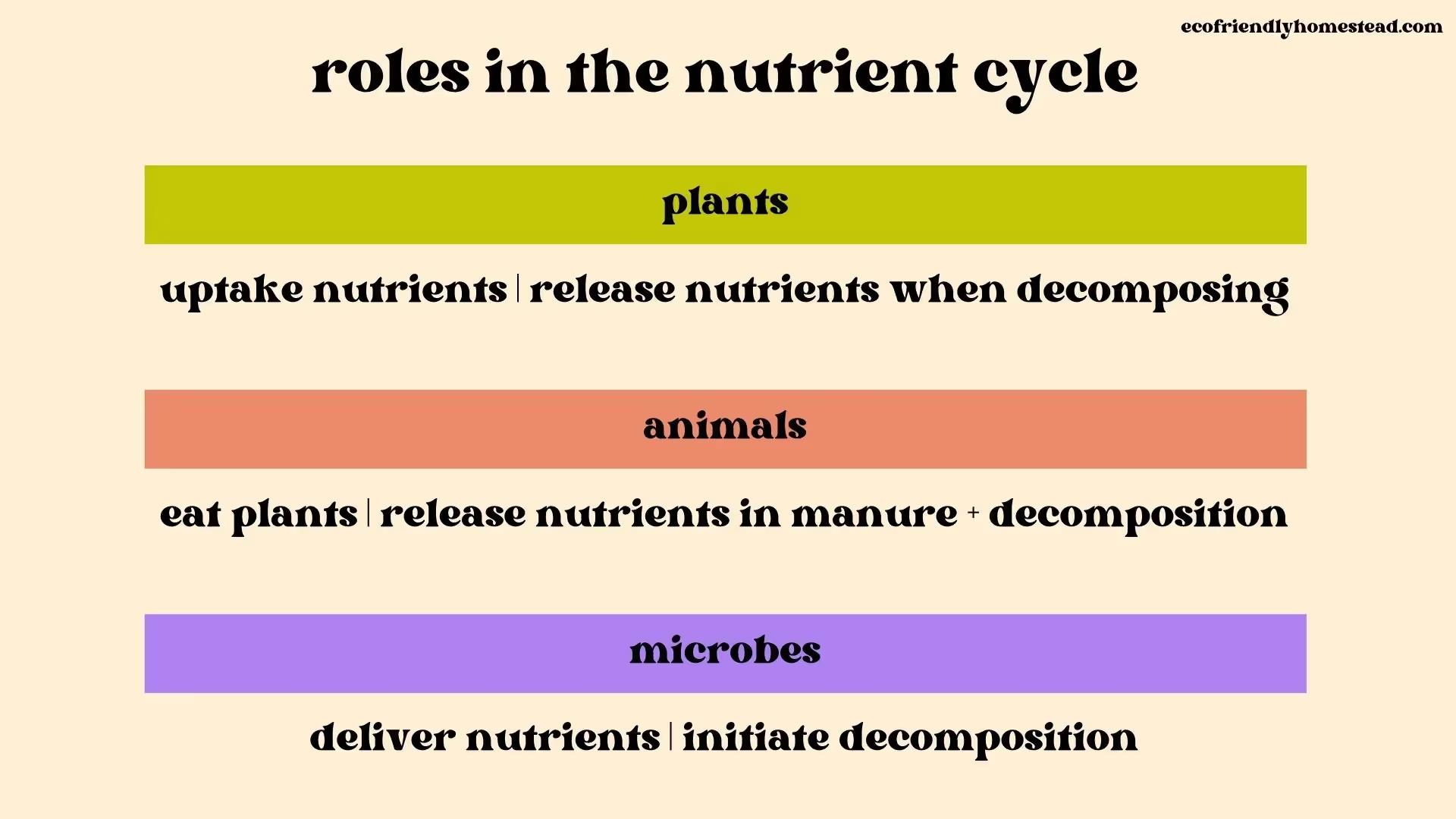
According to the University of Buffalo, plants are active participants in the nutrient cycle. They acquire nutrients from the soil through their roots, uptake essential elements, and incorporate them into their tissues. When plants decompose, they release nutrients back into the soil to be recycled and reused.
Plants take up nutrients from the soil in two ways:
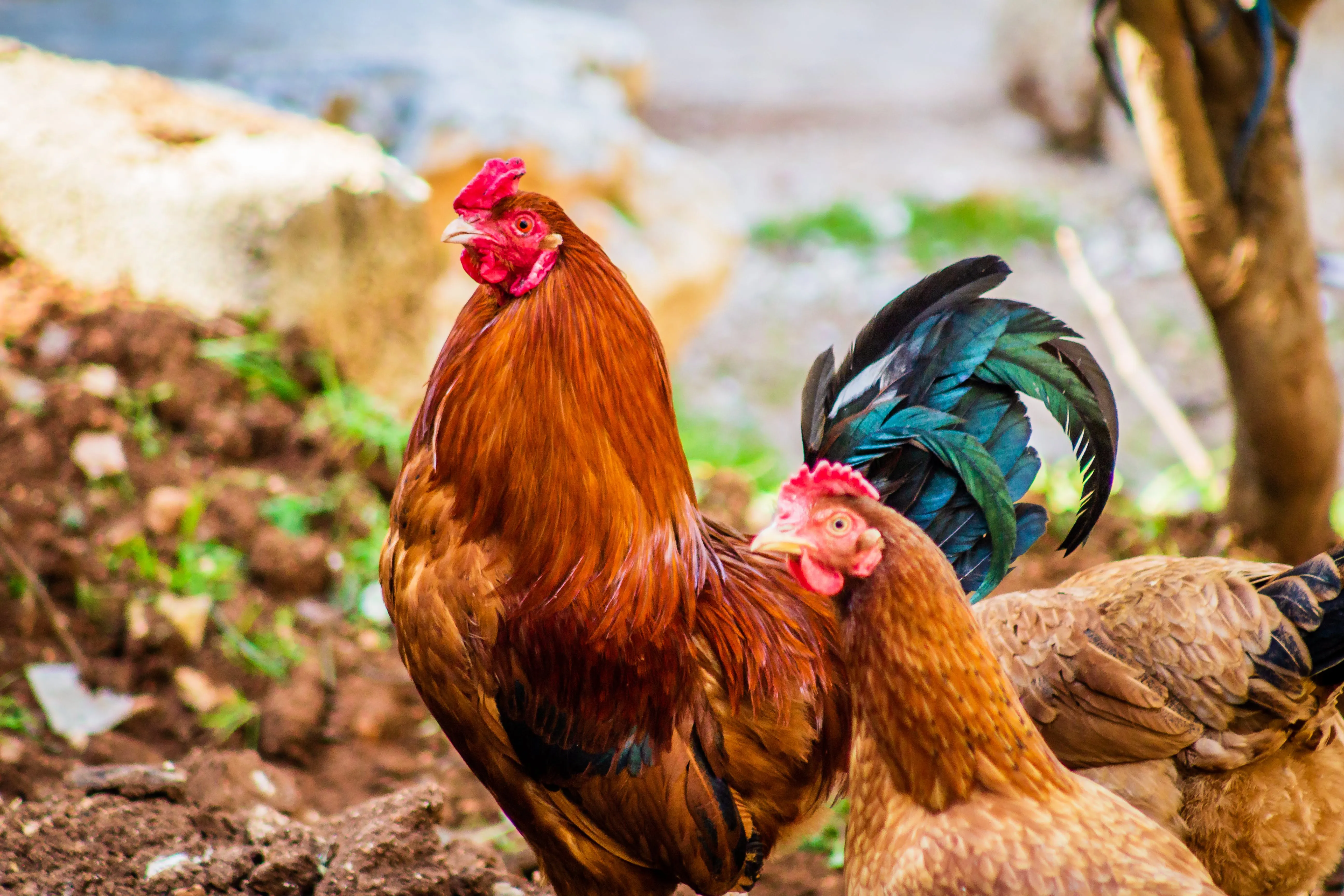
Manure is a fantastic way to keep nutrients on your farm or garden to feed your plants. If you have enough land you may be able to grow a good portion of the forage for your animals. Then, the forage plants you grow for yourself and your animals get the benefit of composted manure applications.
Soil microbes play a crucial role in the nutrient cycle. It is actually these microbes who carry out the processes that cause nutrient cycling and decomposition of organic matter (Frontiersin).
For example, mycorrhizal fungi can mine nutrients from soil minerals and make them available to plant roots. In exchange, the fungi receive sugar from the root exudates (Noble).
Additionally, bacteria and fungi are consumed by other microbes like protozoa or nematodes. Those microorganisms excrete their wastes as plant-available nutrients.
Studies have shown that regenerative agriculture practices can increase soil microbial diversity and richness, which can promote soil health and agricultural productivity.
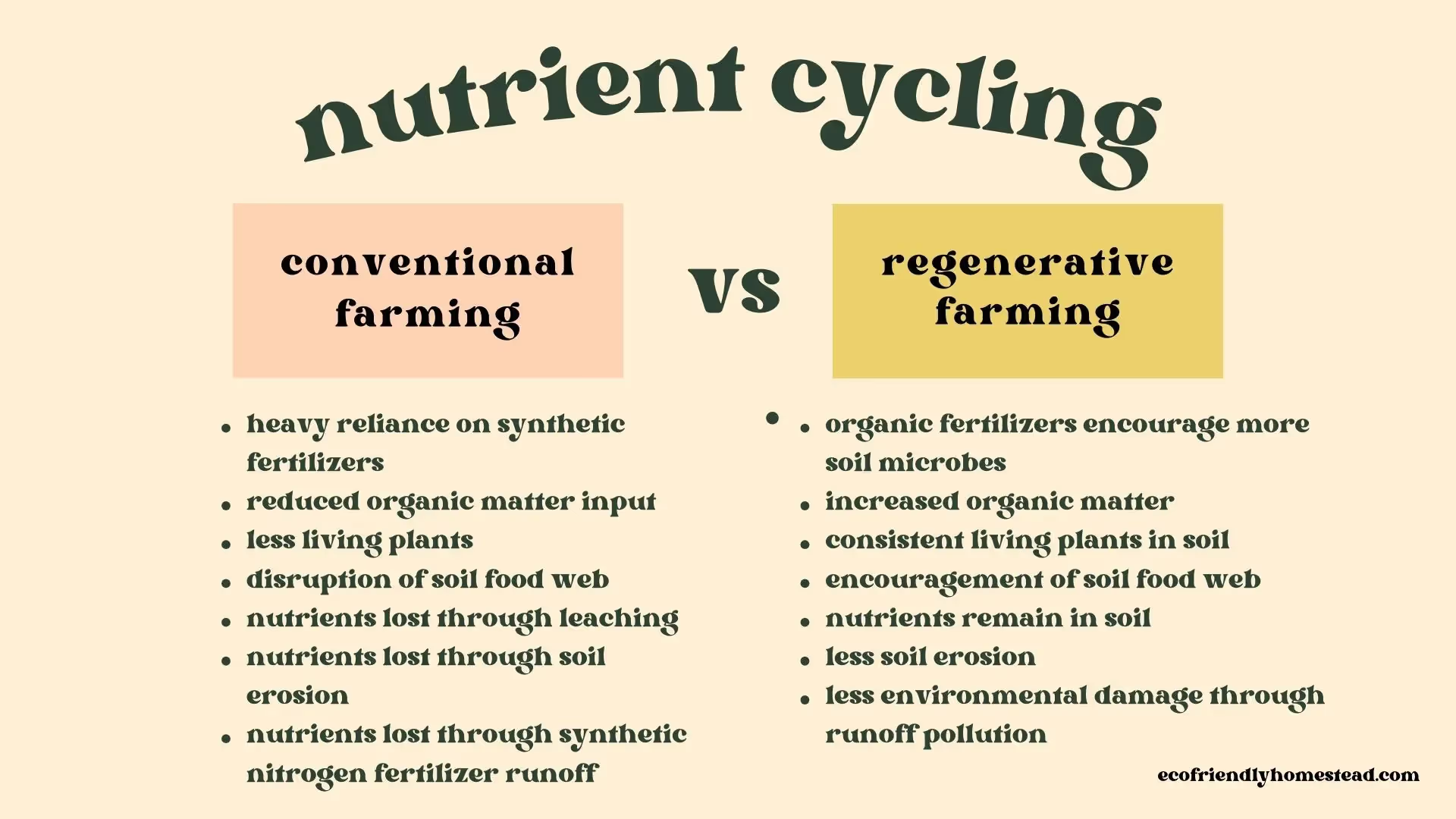
Conventional farming practices often disrupt natural nutrient cycling processes.
It is common for conventional farms to rely on external inputs that need to be manufactured or transported to the farm. It’s also common for these farms to not capture any residual materials produced on their land to be re-applied and recycled.
Here are some ways that conventional farms do not benefit from nutrient cycling:
Regenerative organic no-till farming focuses on healthy soil ecosystems and nutrient circulation.
A paper released in 2022 summarized how regeneratively grown crops have higher levels of vitamins, minerals, and phytochemicals. Furthermore, regeneratively pasture grazed animals have healthier levels of omega fatty acids.
As the research paper notes, these higher nutrient levels “suggest soil health is an under-appreciated influence on nutrient density.”
Nutrient levels in our food are a direct reflection of the nutrient cycle process. The nutrients that our food absorbs throughout the growing process inevitably end up being the same nutrients that we absorb when we eat.
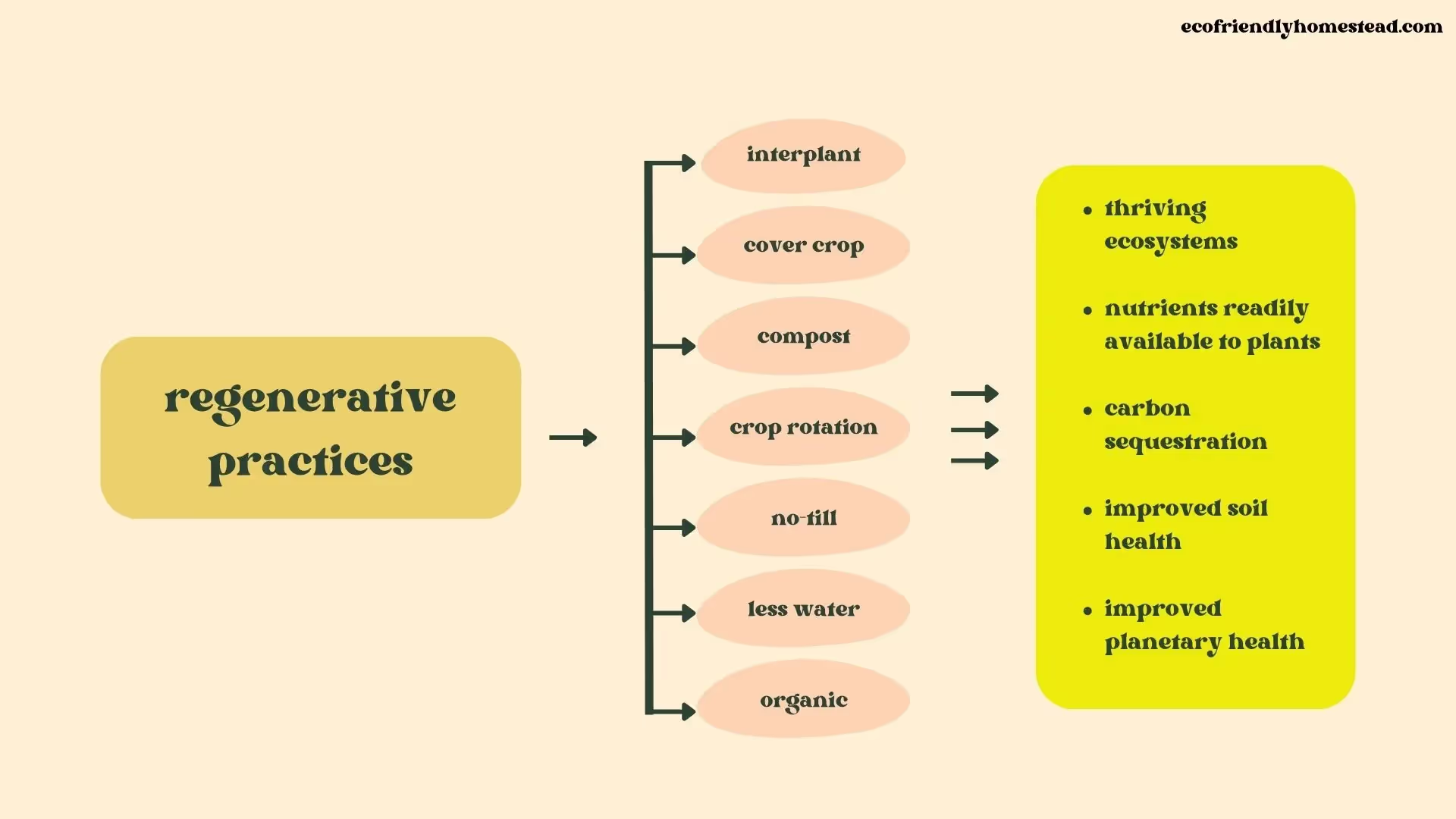
1. Cover crops:
Cover crops enhance soil organic matter, foster microbial activity, and reduce erosion. Cover crops also scavenge nutrients, which prevents leaching.
As Farm Progress notes, cover crops play a crucial role in the soil nutrient cycle by:
2. Crop Rotation and Diversity:
Diverse crop rotations improve nutrient cycling and reduce pest and disease pressure. Each crop family has different nutrient requirements and contributes to the nutrient cycle.
Crop rotation positively impacts nutrient cycling in these ways:
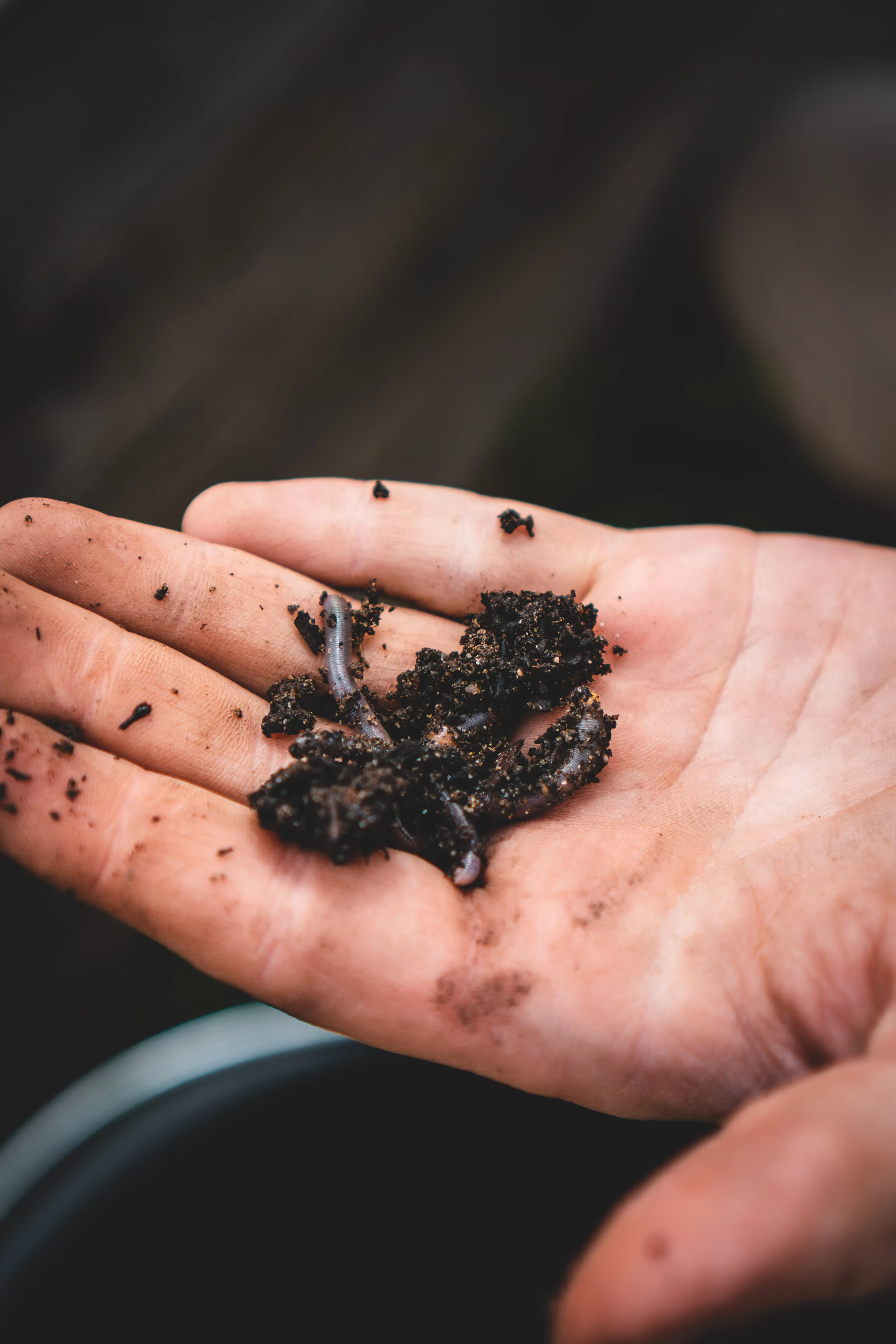
3. Compost:
Create and use compost to recycle organic matter, enrich soil with nutrients, and enhance nutrient recycling processes. Compost enhances nutrient cycling through:
4. Microorganisms:
Microorganisms are key players in nutrient cycling processes. They decompose organic matter, release nutrients, and convert them into plant-available forms. Microbes transform organic compounds, fix atmospheric nitrogen, and promote nutrient balance within the soil ecosystem (WCC).
Microorganisms decompose organic matter, such as plant residues, dead organisms, or excreted waste, through biochemical processes. During decomposition, they break down complex organic compounds into simpler forms. Then, nutrients are released in plant-available forms.
No-till gardens reduce soil disturbance and preserve the beneficial soil organisms involved in nutrient cycling.
5. Managed Regenerative Grazing:
Introduce rotational grazing systems to allow animals to deposit manure, which contributes to nutrient cycling and soil fertility. This is a cycle when animals are eating forage crops on a pasture and then the manure is returned to the soil (SARE 89).
Animals contribute to nutrient recycling through their waste products, such as manure and urine. Animal activities play a vital role in nutrient distribution, soil fertility enhancement, and decomposition processes.
Animal waste contains organic matter and nutrients derived from the plants they consume in pasture. When animals excrete waste, it adds organic matter and nutrients back to the soil. Animals replenish nutrient pools and support nutrient cycling.
6. Minimal Soil Disturbance:
No-till practices preserve soil structure and prevent nutrient loss. This regenerative technique enhances microbiological activity and promotes nutrient cycling.
An interesting experiment conducted over 32 years shows the nutrient-holding capacity of no-till land. A no-till farm and a tilled farm, when compared after 32 years of their method of production, have interesting results.
The no-till farm had twice as much aggregate stability. There was more nitrogen, phosphorus, potassium, magnesium, and calcium available.
Most notable was the amount of nitrogen and magnesium available on the no-till farm when compared to the plowed farm. The no-till farm also had 35% more organic matter (Moebius, SARE 246).
7. Organic Inputs:
Organic matter is added to the garden through compost, mulch, cover crop residues, and animal manure. Organic matter enriches the soil, boosts microbial populations, and replenishes nutrient pools. These organic inputs support nutrient management and soil fertility (ecofarmingdaily).
8. Efficient water management:
Water is a precious resource in the farm or garden. Regenerative growers turn to irrigation to water their crops, which can save up to 80% of water (UMass).
On any scale, rainwater can be captured and utilized for irrigation and watering. This reduces the strain on the water supply and hauling in of water.
Moreover, when soil has enough organic matter, it is good drainage. This reduces instances of water-logging, which in turn reduces nutrient leaching.
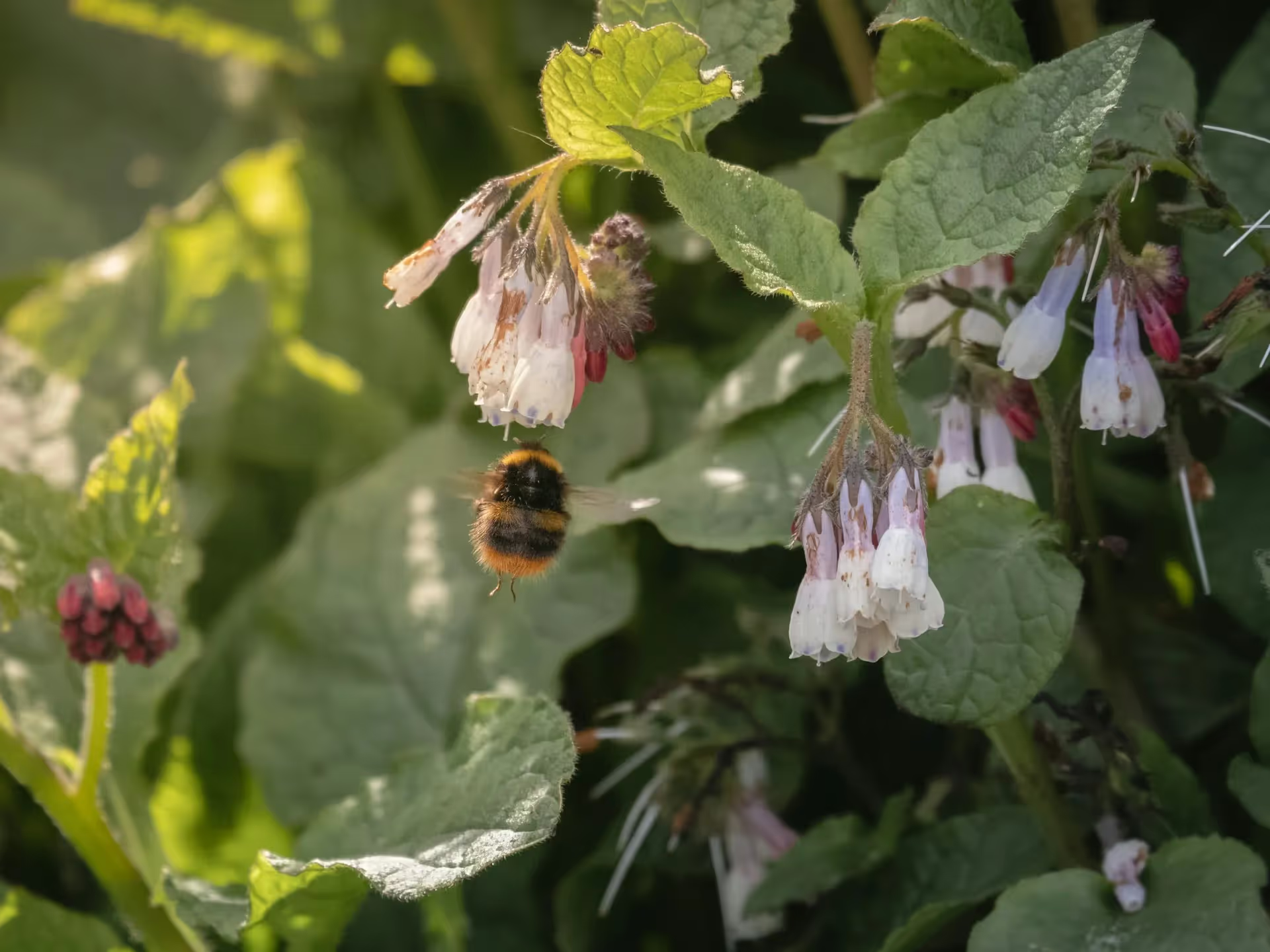
Regenerative agriculture practices focus on enhancing nutrient management. Gardeners can work with the same techniques to create healthier, more resilient gardens that are sustainable. These principles not only improve soil fertility but also contribute to the overall health of our ecosystems.
Scaling up regenerative farming practices can lead to significant positive impacts on ecosystem processes. The health, biodiversity, and carbon sequestration of the environment are improved.
These practices can also be scaled down and applied to backyard gardens and homesteads for more resilient plants. Nutrient cycling reduces the need for outside inputs, so gardening is more affordable.
Support and promote regenerative practices in your garden to help create more sustainable food systems.
